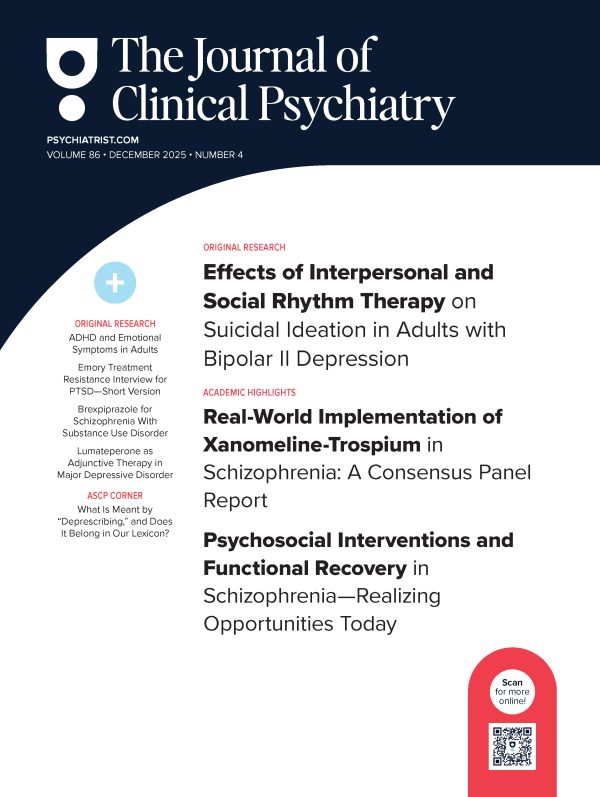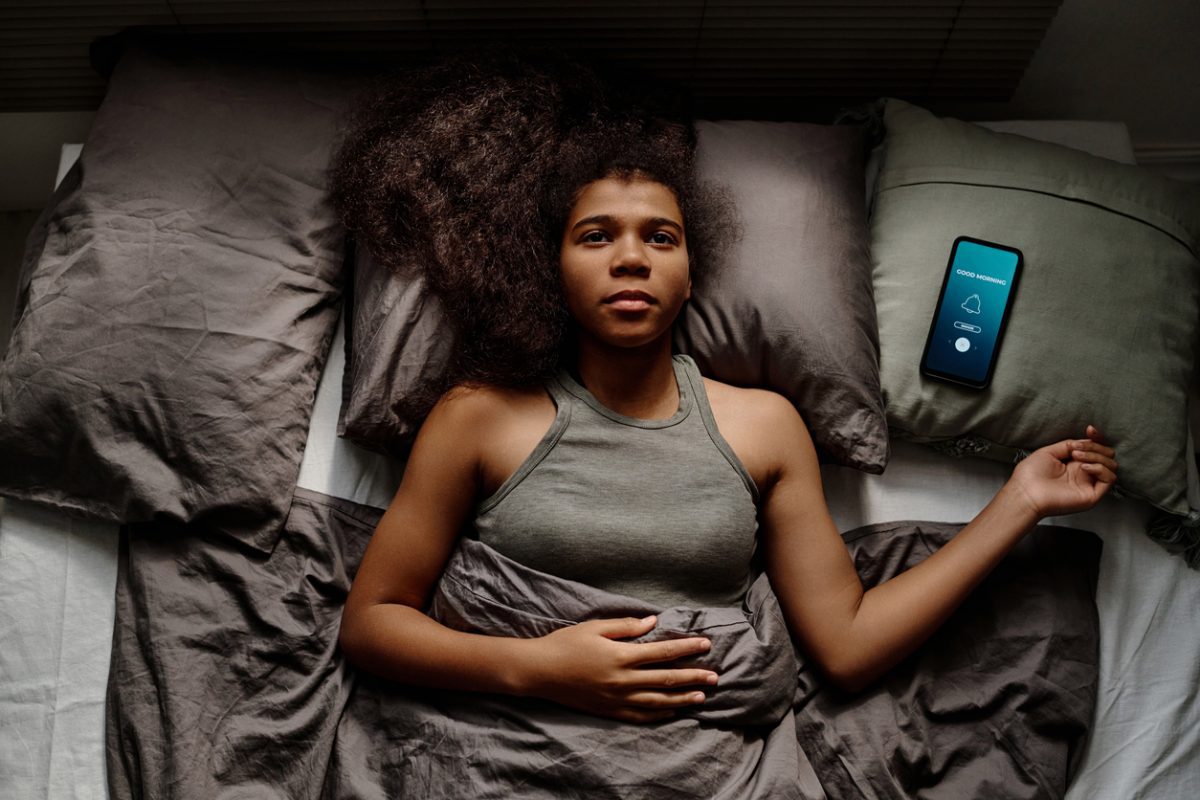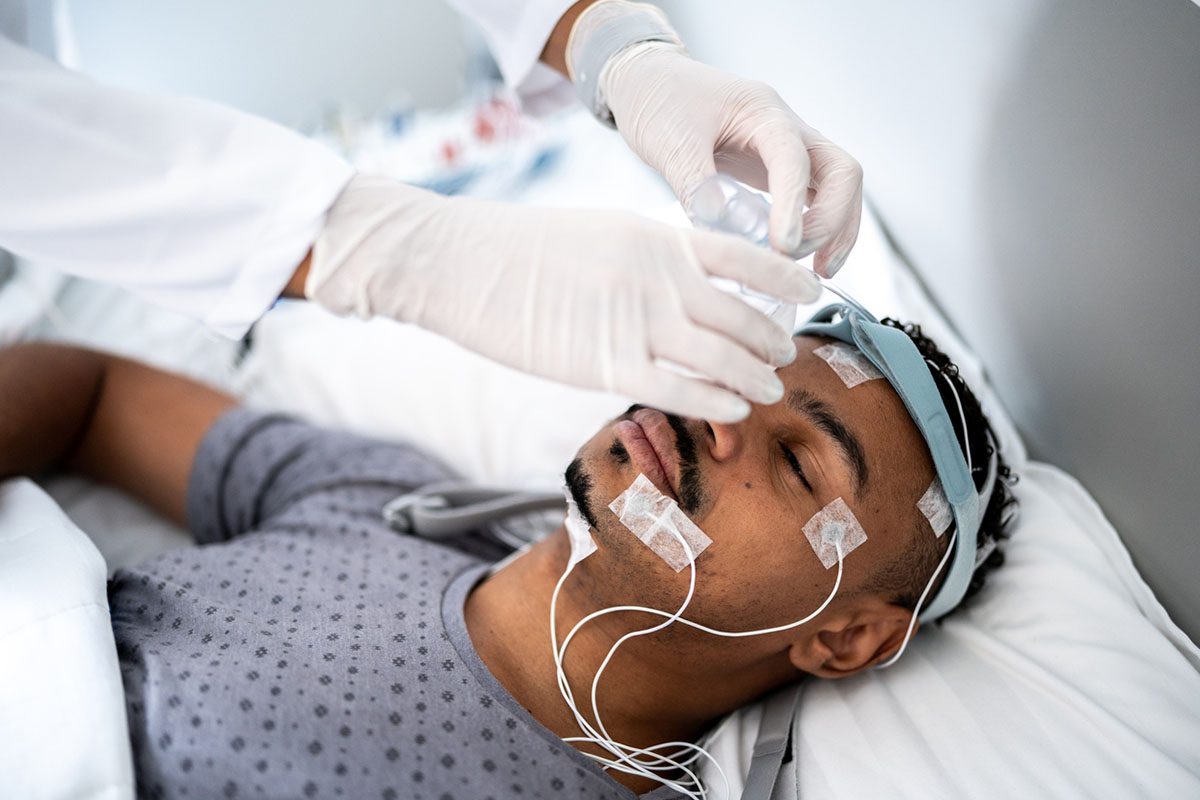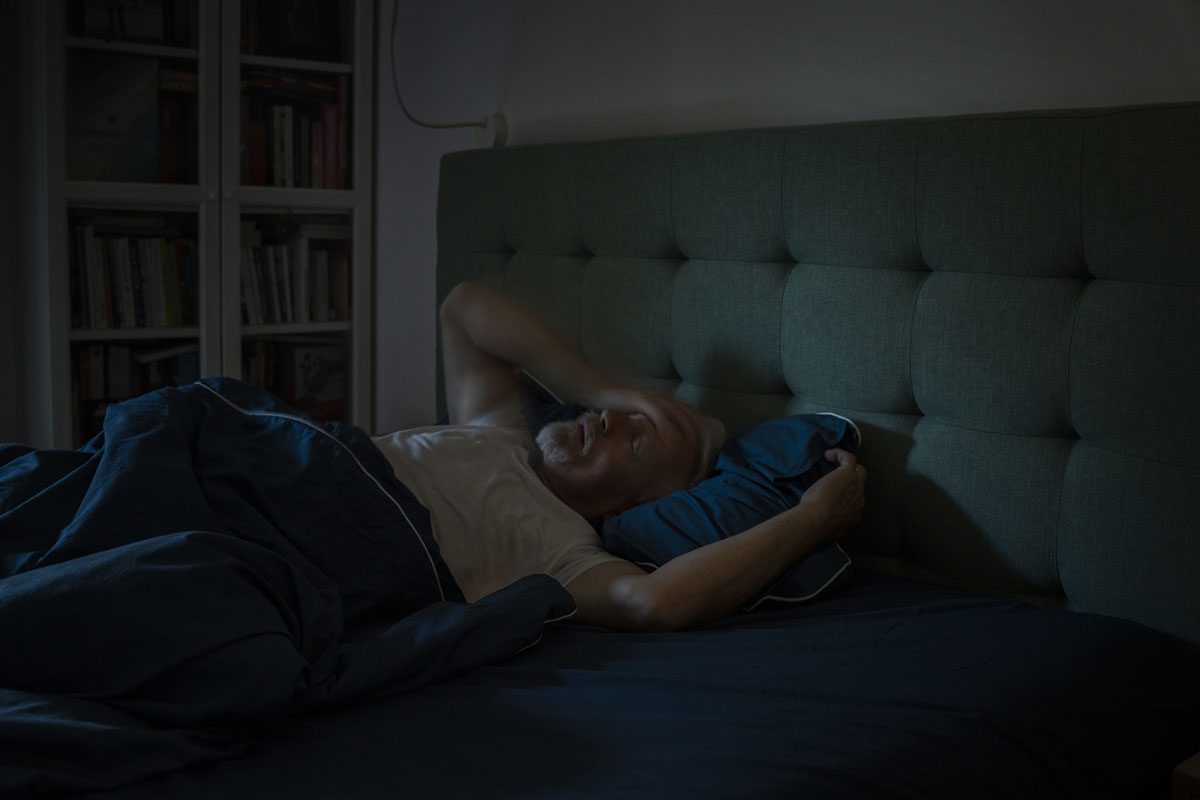ABSTRACT
Objective: Insomnia is prevalent and is associated with a range of negative sequelae. Cognitive behavioral treatment for insomnia (CBT-I) is the recommended intervention, but availability is limited. Telehealth provides increased access, but its efficacy is not certain. The objective of this study was to compare the efficacy of CBT-I delivered by telehealth to in-person treatment and to a waitlist control.
Methods: Individuals with DSM-5 insomnia disorder (n = 60) were randomized to telehealth CBT-I, in-person CBT-I, or 8-week waitlist control. CBT-I was delivered over 6–8 weekly sessions by video telehealth or in-person in an outpatient clinic. Follow-up assessments were at 2 weeks and 3 months posttreatment. The Insomnia Severity Index (ISI) was the primary outcome. Change in ISI score was compared between the CBT-I group in an intent-to-treat, noninferiority analysis using an a priori margin of −3.0 points. All analyses were conducted using mixed-effects models. Data collection occurred from November 2017–July 2020.
Results: The mean (SD) change in ISI score from baseline to 3-month follow-up was −7.8 (6.1) points for in-person CBT-I, −7.5 (6.9) points for telehealth, and −1.6 (2.1) for waitlist, and the difference between the CBT-I groups was not statistically significant (t28 = −0.98, P = .33). The lower confidence limit of this between-group difference in the mean ISI changes was greater than the a priori margin of −3.0 points, indicating that telehealth treatment was not inferior to in-person treatment. There were significant improvements on most secondary outcome measures but no group differences.
Conclusions: Telehealth CBT-I may produce clinically significant improvements in insomnia severity that are noninferior to in-person treatment. CBT-I is also associated with significant gains across a range of domains of functioning. Telehealth is a promising option for increasing access to treatment without loss of clinical gains.
Trial Registration: ClinicalTrials.gov identifier: NCT03328585
Members Only Content
This full article is available exclusively to Professional tier members. Subscribe now to unlock the HTML version and gain unlimited access to our entire library plus all PDFs. If you’re already a subscriber, please log in below to continue reading.
References (25)

- Roth T, Coulouvrat C, Hajak G, et al. Prevalence and perceived health associated with insomnia based on DSM-IV-TR; International Statistical Classification of Diseases and Related Health Problems, Tenth Revision; and Research Diagnostic Criteria/International Classification of Sleep Disorders, Second Edition criteria: results from the America Insomnia Survey. Biol Psychiatry. 2011;69(6):592–600. PubMed CrossRef
- Shochat T, Umphress J, Israel AG, et al. Insomnia in primary care patients. Sleep. 1999;22(suppl 2):S359–S365. PubMed
- Benca RM. Consequences of insomnia and its therapies. J Clin Psychiatry. 2001;62(suppl 10):33–38. PubMed
- Fullerton DS. The economic impact of insomnia in managed care: a clearer picture emerges. Am J Manag Care. 2006;12(8 suppl):S246–S252. PubMed
- Mitchell MD, Gehrman P, Perlis M, et al. Comparative effectiveness of cognitive behavioral therapy for insomnia: a systematic review. BMC Fam Pract. 2012;13(1):40. PubMed CrossRef
- Smith MT, Perlis ML, Park A, et al. Comparative meta-analysis of pharmacotherapy and behavior therapy for persistent insomnia. Am J Psychiatry. 2002;159(1):5–11. PubMed CrossRef
- Morland LA, Greene CJ, Rosen C, et al. Issues in the design of a randomized noninferiority clinical trial of telemental health psychotherapy for rural combat veterans with PTSD. Contemp Clin Trials. 2009;30(6):513–522. PubMed CrossRef
- Morland LA, Greene CJ, Rosen CS, et al. Telemedicine for anger management therapy in a rural population of combat veterans with posttraumatic stress disorder: a randomized noninferiority trial. J Clin Psychiatry. 2010;71(7):855–863. PubMed CrossRef
- Morland LA, Mackintosh MA, Rosen CS, et al. Telemedicine versus in-person delivery of cognitive processing therapy for women with posttraumatic stress disorder: a randomized noninferiority trial. Depress Anxiety. 2015;32(11):811–820. PubMed CrossRef
- Holmqvist M, Vincent N, Walsh K. Web- vs telehealth-based delivery of cognitive behavioral therapy for insomnia: a randomized controlled trial. Sleep Med. 2014;15(2):187–195. PubMed CrossRef
- Arnedt JT, Conroy DA, Mooney A, et al. Telemedicine versus face-to-face delivery of cognitive behavioral therapy for insomnia: a randomized controlled noninferiority trial. Sleep (Basel). 2021;44(1):zsaa136. PubMed CrossRef
- Bastien CH, Vallières A, Morin CM. Validation of the Insomnia Severity Index as an outcome measure for insomnia research. Sleep Med. 2001;2(4):297–307. PubMed CrossRef
- Kroenke K, Spitzer RL, Williams JB. The PHQ-9: validity of a brief depression severity measure. J Gen Intern Med. 2001;16(9):606–613. PubMed CrossRef
- Spitzer RL, Kroenke K, Williams JB, et al. A brief measure for assessing generalized anxiety disorder: the GAD-7. Arch Intern Med. 2006;166(10):1092–1097. PubMed CrossRef
- Mundt JC, Marks IM, Shear MK, et al. The Work and Social Adjustment Scale: a simple measure of impairment in functioning. Br J Psychiatry. 2002;180(5):461–464. PubMed CrossRef
- Smets EM, Garssen B, Bonke B, et al. The Multidimensional Fatigue Inventory (MFI) psychometric qualities of an instrument to assess fatigue. J Psychosom Res. 1995;39(3):315–325. PubMed CrossRef
- Ware J Jr, Kosinski M, Keller SD. A 12-Item Short-Form Health Survey: construction of scales and preliminary tests of reliability and validity. Med Care. 1996;34(3):220–233. PubMed CrossRef
- Benz F, Knoop T, Ballesio A, et al. The efficacy of cognitive and behavior therapies for insomnia on daytime symptoms: a systematic review and network meta-analysis. Clin Psychol Rev. 2020;80:101873. PubMed CrossRef
- Agarwal N, Jain P, Pathak R, et al. Telemedicine in India: a tool for transforming health care in the era of COVID-19 pandemic. J Educ Health Promot. 2020;9(1):190. PubMed CrossRef
- Ramaswamy A, Yu M, Drangsholt S, et al. Patient satisfaction with telemedicine during the COVID-19 pandemic: retrospective cohort study. J Med Internet Res. 2020;22(9):e20786. PubMed CrossRef
- Torales J, O’Higgins M, Castaldelli-Maia JM, et al. The outbreak of COVID-19 coronavirus and its impact on global mental health. Int J Soc Psychiatry. 2020;66(4):317–320. PubMed CrossRef
- Altena E, Baglioni C, Espie CA, et al. Dealing with sleep problems during home confinement due to the COVID-19 outbreak: practical recommendations from a task force of the European CBT-I Academy. J Sleep Res. 2020;29(4):e13052. PubMed CrossRef
- Ho FY, Chan CS, Lo WY, et al. The effect of self-help cognitive behavioral therapy for insomnia on depressive symptoms: an updated meta-analysis of randomized controlled trials. J Affect Disord. 2020;265:287–304. PubMed CrossRef
- Grandner MA. Sleep, health, and society. Sleep Med Clin. 2020;15(2):319–340. PubMed CrossRef
- Thomas A, Grandner M, Nowakowski S, et al. Where are the behavioral sleep medicine providers and where are they needed? a geographic assessment. Behav Sleep Med. 2016;14(6):687–698. PubMed CrossRef





